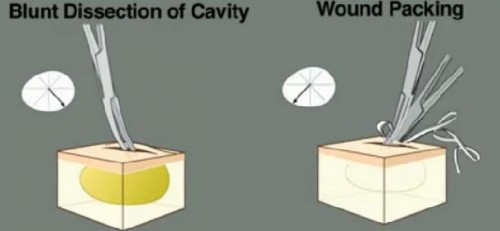10/11/2012
Exsufflation à l'aiguille: Pas si efficace ?
Does needle thoracostomy provide adequate and effective decompression of tension pneumothorax ?
Martin M et All.J Trauma Acute Care Surg. 2012;00: 00Y00 (DOI: 10.1097/TA.0b013e31825ac511)
Il existe un grand débat sur les modalités d'exsufflation d'un pneumothorax suffocant (site de ponction, longueur et calibre de l'aiguille, thoracostomie au doigt, drainage ?).
Ce travail expérimental pointe du doigt, UNE FOIS DE PLUS, les limites de l'exsuffflation à l'aguille:
"All NTs were patent on initial placement, but 5 (26%) demonstrated mechanical failure (due to kinking, obstruction, or dislodgment) within 5 minutes of placement, all associated with hemodynamic decline. Among the 14 NTs that remained patent at 5 minutes, 6 (43%) failed to relieve tension physiology for an overall failure rate of 58%"
Ces données doivent pousser plus avant la formation vers les deux autres moyens que sont l'exsufflation au doigt (présenté par beaucoup comme la méthode de référence) et bien sûr le drainage thoracique.
Approfondir: Document 1 Document 2 La réflexion US TCCC
08/11/2012
Coniotomie: Pas le kit PCK
Emergency cricothyroidotomy performed by inexperienced clinicians--surgical technique versus indicator-guided puncture technique
Emerg Med J. 2012 Jul 27. [Epub ahead of print]
Abstract
Background To improve the ease and safety of cricothyroidotomy especially in the hand of the inexperienced, new instruments have been developed. In this study, we compared a new indicator-guided puncture technique (PCK) with standard surgical technique (ST) regarding success rate, performance time and complications.
Methods Cricothyroidotomy in 30 human cadavers performed by 30 first year anaesthesia residents. The set chosen for use was randomised: PCK-technique (n=15) and ST (n=15). Success rates, insertion times and complications were compared. Traumatic lesions were anatomically confirmed after dissection.
Results The ST-group had a higher success rate (100% vs 67%; p=0.04). There was no difference in time taken to complete the procedure (PCK 82 s. vs ST 95 s.; p=0.89). There was a higher complication rate in the PCK-group (67% vs 13%; p=0.04). Most frequent complication in the PCK-group was injury to the posterior tracheal wall (n=8), penetration to the oesophageal lumen (n=4) and injury to the thyroid and/or cricoid cartilage (n=5). In the ST-group in only 2 cases minor complications were observed (small vessel injury).
Conclusions In this human cadaver study the PCK technique produced more major complications and more failures than the ST. In the hand of the inexperienced operator the standard surgical approach seems to be a safe procedure, which can successfully be performed within an adequate time. The PCK technique cannot be recommended for inexperienced operators.
01/11/2012
Inciser un abcès



